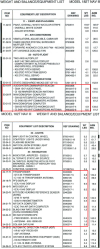You can get an idea by looking at Air Power and seeing what a factory overhaul will run today. A field overhaul will be less, but go up over time.
Taking an O-360 180HP engine, it is about $35,000. With a 2000 hour TBO, that is about $17.50 per hour for the engine overhaul.
My Mooney has a Continental TSIO-360, and a Factory Rebuilt (zero time) is $85,000, so $42.50 per hour. But factory rebuilt comes with a lot of accessories that are new or zero time also.
Right. Now add installation cost and all of the other stuff you'll R/R in the process (because that's when it gets found).
Getting back to the premise in the OP, my assumption is that for a new plane there really is no expected engine expense. At 100 hours/year it "should" last long enough that the initial cost is fully amortized.
Most of the "inexpensive" used planes, though, have engine times well into their TBOH period. A poster above mentioned that the 15-20 year old Cirrus' are in the "sweet spot". Trouble is, that "sweet spot" generally includes an engine that has been lovingly run 100 hours/year by the owner for the past 15-20 years....with a 2,000 hr TBOH. So, you have to be prepared to add the cost of an engine or overhaul to the purchase price.
Those Cirrus' also are running up against the second 10-year CAPS re-pack, $20K+ for the first-gen planes.
https://forum.cirruspilots.org/t/caps-2023-prices/256835
So: Here's a listing at $250K:
https://www.controller.com/listing/for-sale/231730635/2004-cirrus-sr22-g2-piston-single-aircraft 2,400 hrs on the engine and 1,500 on the prop.
Add $75K for engine and installation, $20K for CAPS re-pack, and add a prop replace or overhaul. At 20 years/2,500 hrs, you probably want a paint job, too. Call it $400K by the time you have that "$250K" plane into the condition you really want to put your family in the back and fly XC.
So, from a cash perspective, it's $400K cash, vs. $200K cash plus a 20-year $800K loan (with a warranty). That's about $60K/year at 5%, so assuming you have the other $200K in cash and earning some sort of ROI, you're basically covered for the first (not quite) 3 years. After that, you have a $60K/year bogey to cover....but your operating expenses are going to be less than an older plane, just due to normal wear and component aging, right? You also have all current technology, so no immediate temptation to upgrade avionics or other items here and there.
Now, 10 years from now, what is the value difference between a 4,000-hr 2004 and 2,000-hr 2024 Cirrus? There are no 40-year-old SR22s, so that's a dead end. What's a good comparison?

